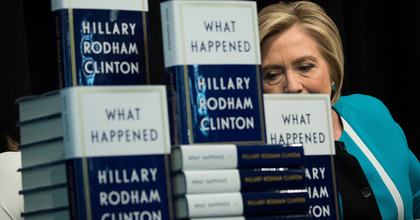By Sam Kriss
HuffPost
September 21, 2017
At 2 in the morning after Election Day in 2016, the absence of Hillary Clinton walked onto a stage at the Javits Center in Manhattan. The absence of Hillary Clinton is vast. It pullulates like slime mold across the internet; it screams from TV screens; it peers dim and terrified from behind Clinton’s own eyes. Since the election, it’s grown to swallow the whole of American and international politics. But that night, it appeared in the form of her campaign chair, John Podesta. He came out gangly and enthusiastic, flapping a cavernous mouth open and shut to strange, wild applause. Clinton, he told the crowd at her campaign headquarters, would not be appearing to make her concession speech. “We can wait a little bit longer, can’t we?” he said. “Everybody should head home. We should get some sleep. We’ll have more to say tomorrow.” Clinton herself didn’t appear until hours later: coiffed, grinning wryly, sepulchral. Between the two speeches, stories and rumors circulated, frantic gnats twirling in her absence. Hillary Clinton had locked herself in her hotel room. Hillary Clinton refused to talk to anyone. Hillary Clinton was insensate, or catatonic, or drunk or mindless on Xanax and disbelief.


